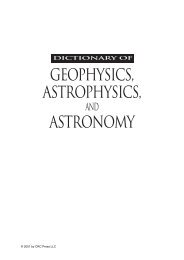tc dokuz eylül university institute of social sciences translation and ...
tc dokuz eylül university institute of social sciences translation and ...
tc dokuz eylül university institute of social sciences translation and ...
You also want an ePaper? Increase the reach of your titles
YUMPU automatically turns print PDFs into web optimized ePapers that Google loves.
Not only do norms operate in different kinds <strong>of</strong> <strong>translation</strong>s, but also<br />
throughout the <strong>translation</strong> process itself. The two broadest types <strong>of</strong> norms are<br />
preliminary norms <strong>and</strong> operational norms.<br />
Preliminary norms refer to two different sets <strong>of</strong> considerations:<br />
1. Translation policy refers to the factors that govern the choice <strong>of</strong> what type <strong>of</strong><br />
texts are translated into a culture at a particular point in time, e.g. source text<br />
types, individual source texts, authors, source languages.<br />
2. Directness <strong>of</strong> <strong>translation</strong> deals with the amount <strong>of</strong> tolerance given for<br />
translating from languages other than the source language. Is indirect<br />
<strong>translation</strong> even permitted? Which languages are preferred? Is there a<br />
tendency/obligation to mark a translated work as having been mediated or is<br />
this fact ignored? (Toury, 1995; 58).<br />
Operational norms direct the decisions made during the <strong>translation</strong> process.<br />
Therefore, they affect the relationship between the source text <strong>and</strong> the target<br />
language.<br />
1. Matricial norms govern the existence <strong>of</strong> the target language material<br />
intended as a substitute for the source text, its location in the text, as well as<br />
textual segmentation. It determines the extent to which omissions, additions<br />
<strong>and</strong> changes <strong>of</strong> location occur.<br />
2. Textual linguistic norms, in turn govern the selection <strong>of</strong> material to<br />
formulate the target text in, or replace some segments <strong>of</strong> original material<br />
with. These norms may be either general or particular.<br />
Operational norms can be said to form a model which reflects either the<br />
norms <strong>of</strong> a <strong>translation</strong> focused on the source text (adequate <strong>translation</strong>) or one<br />
focused on the target language (acceptable <strong>translation</strong>.) If a <strong>translation</strong> is fully<br />
focused on the source text, <strong>and</strong> then after it is translated, it does not really fit into the<br />
target language at all, it is a sort <strong>of</strong> model <strong>of</strong> that language; <strong>and</strong> the <strong>translation</strong> is<br />
imposed on the culture. Even if it later comes to fit into the culture, initially it has no<br />
slot to be put into. On the other h<strong>and</strong>, if a <strong>translation</strong> is focused solely on the target<br />
32
















